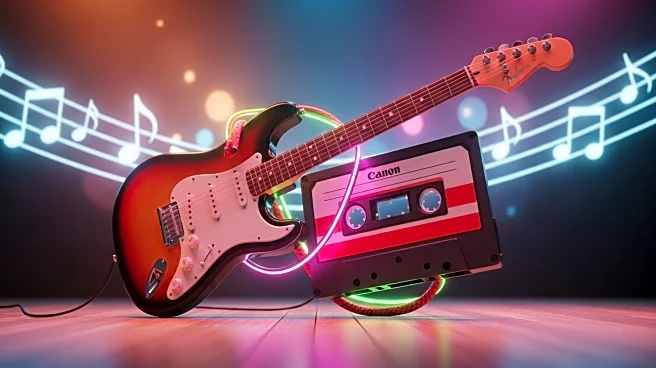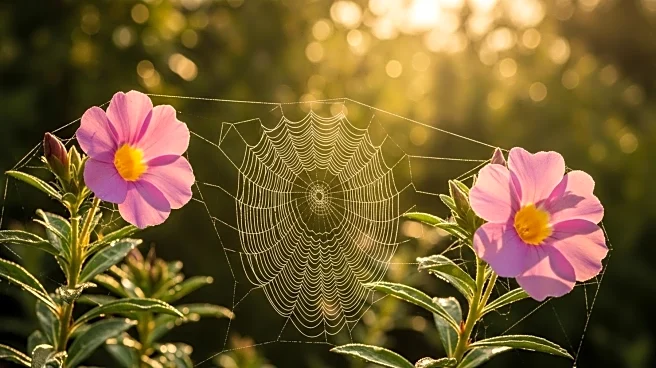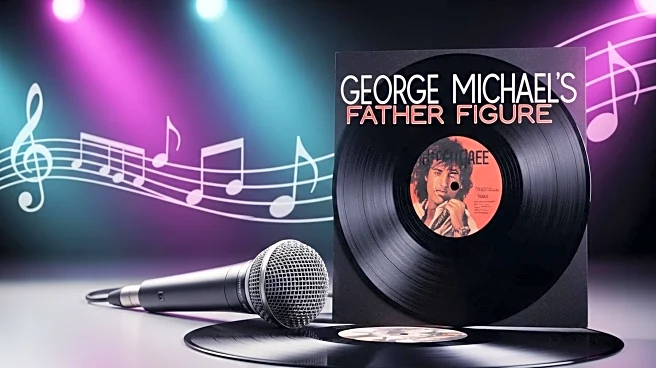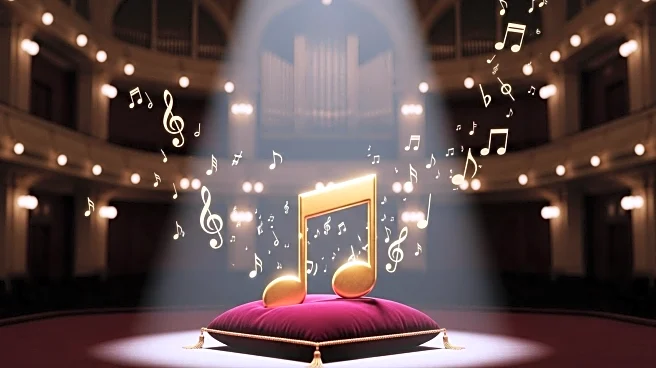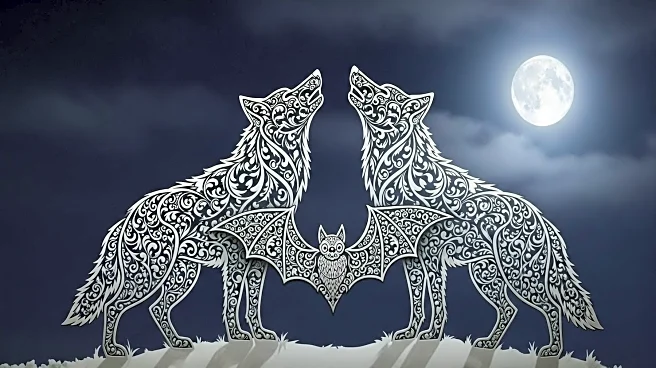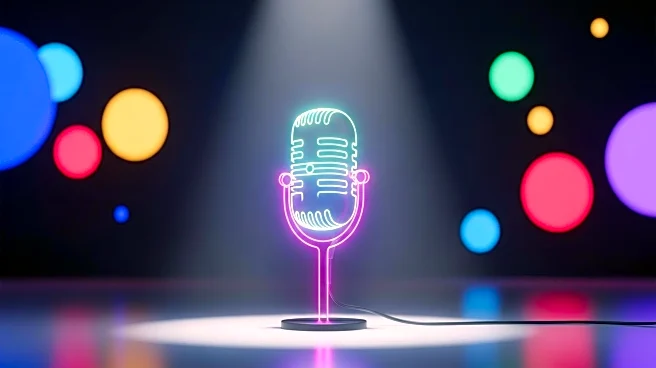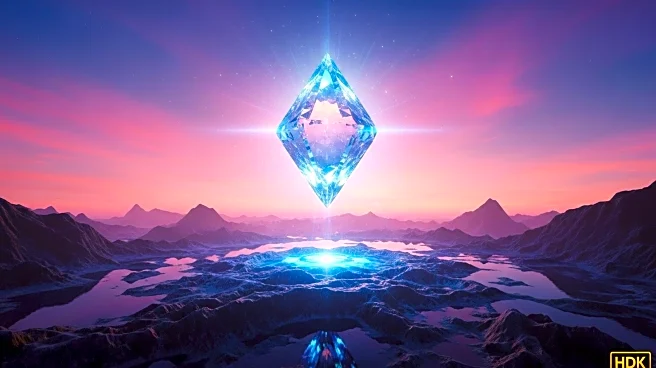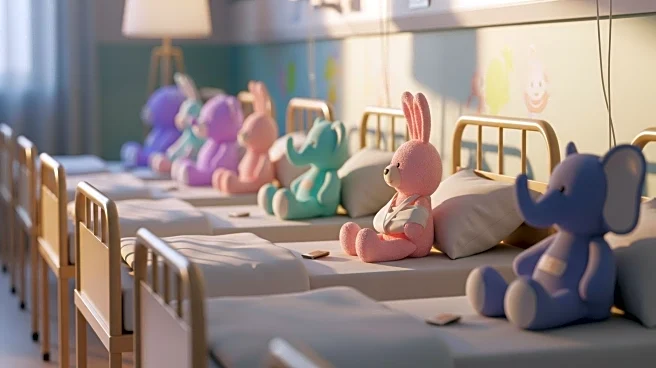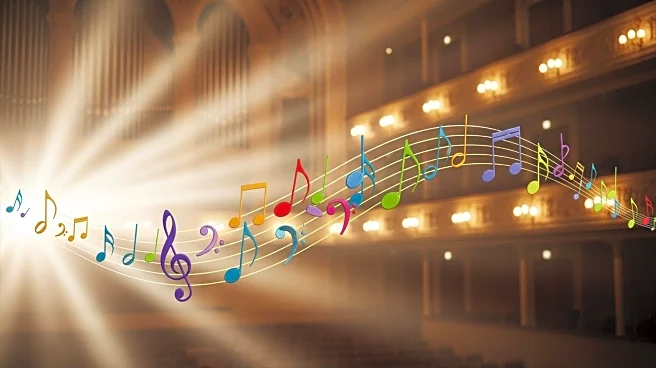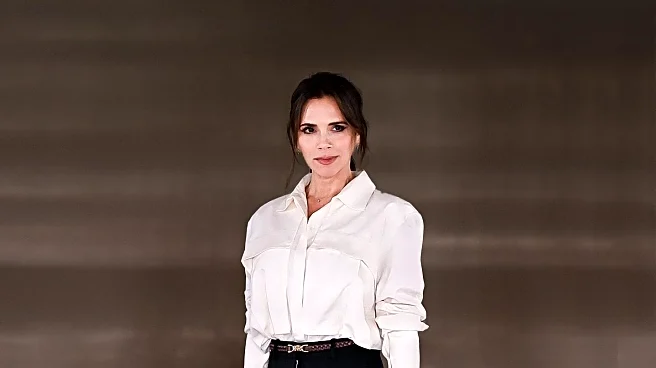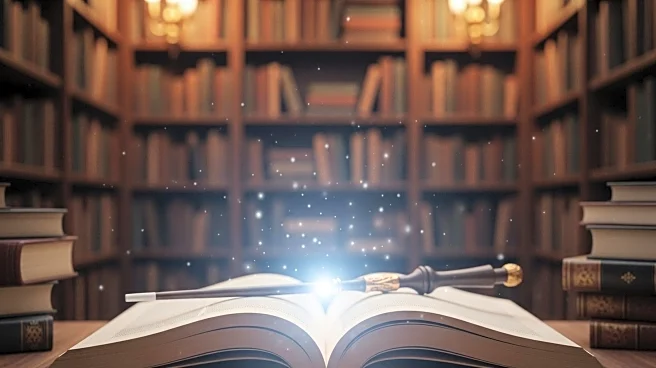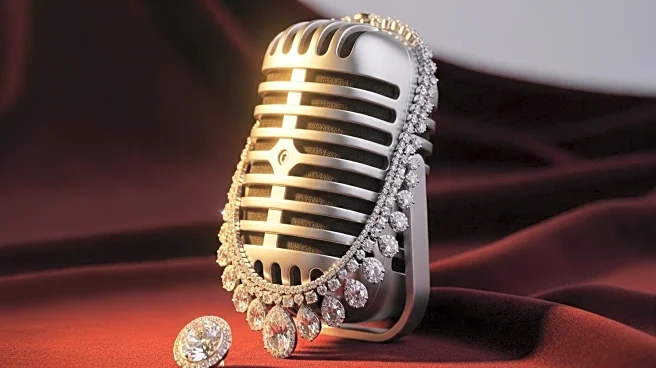What is the story about?
What's Happening?
The musical adaptation of the 1985 sci-fi comedy 'Back to the Future' is currently being performed at the Sydney Lyric Theatre. The production remains faithful to the original film, featuring the iconic time-traveling DeLorean and characters like Marty McFly and Doc Brown. The musical, written by Bob Gale, who co-created the original film, includes updates such as replacing the Libyan terrorists with a radiation poisoning subplot. The show is noted for its spectacle, including the DeLorean's on-stage appearances, and its use of screens to enhance the time-travel experience. While the musical maintains the film's nostalgic elements, it has been critiqued for lacking narrative surprise and character depth.
Why It's Important?
The musical's adherence to the original film highlights the enduring popularity of 'Back to the Future' and its cultural impact. By focusing on nostalgia, the production appeals to diehard fans who appreciate the familiar elements and references. This approach, however, may limit its appeal to new audiences unfamiliar with the film. The musical's success could influence future adaptations of classic films, emphasizing the balance between innovation and loyalty to source material. The production also showcases the potential for theatrical technology to enhance storytelling, as seen with the DeLorean's stage presence.
What's Next?
The musical is scheduled to run at the Sydney Lyric Theatre until January 2026. Its reception may lead to further international tours or adaptations, potentially expanding its audience. The production's success could encourage other filmmakers and playwrights to explore similar adaptations of beloved films, focusing on nostalgia and technological enhancements. Audience reactions and box office performance will likely influence future decisions regarding the show's longevity and potential adaptations.
Beyond the Headlines
The musical's focus on nostalgia raises questions about the role of innovation in adaptations. While it satisfies fans of the original film, it may not engage new audiences seeking fresh narratives. This trend reflects broader cultural dynamics, where familiar content is often favored over new stories. The production also highlights the evolving use of technology in theater, demonstrating how it can create immersive experiences that bridge the gap between film and stage.
AI Generated Content
Do you find this article useful?
